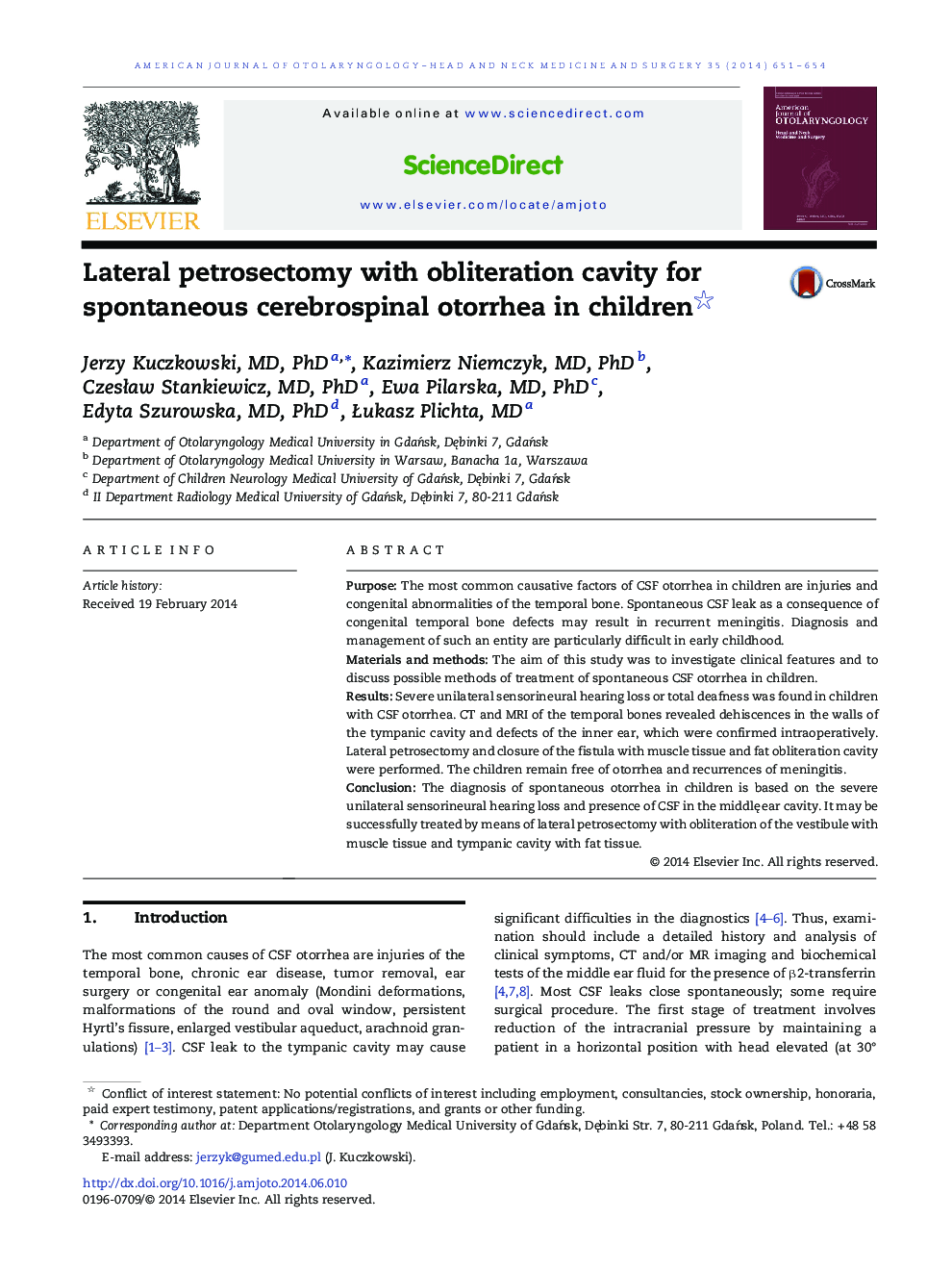| Article ID | Journal | Published Year | Pages | File Type |
|---|---|---|---|---|
| 4103362 | American Journal of Otolaryngology | 2014 | 4 Pages |
PurposeThe most common causative factors of CSF otorrhea in children are injuries and congenital abnormalities of the temporal bone. Spontaneous CSF leak as a consequence of congenital temporal bone defects may result in recurrent meningitis. Diagnosis and management of such an entity are particularly difficult in early childhood.Materials and methodsThe aim of this study was to investigate clinical features and to discuss possible methods of treatment of spontaneous CSF otorrhea in children.ResultsSevere unilateral sensorineural hearing loss or total deafness was found in children with CSF otorrhea. CT and MRI of the temporal bones revealed dehiscences in the walls of the tympanic cavity and defects of the inner ear, which were confirmed intraoperatively. Lateral petrosectomy and closure of the fistula with muscle tissue and fat obliteration cavity were performed. The children remain free of otorrhea and recurrences of meningitis.ConclusionThe diagnosis of spontaneous otorrhea in children is based on the severe unilateral sensorineural hearing loss and presence of CSF in the middlę ear cavity. It may be successfully treated by means of lateral petrosectomy with obliteration of the vestibule with muscle tissue and tympanic cavity with fat tissue.
